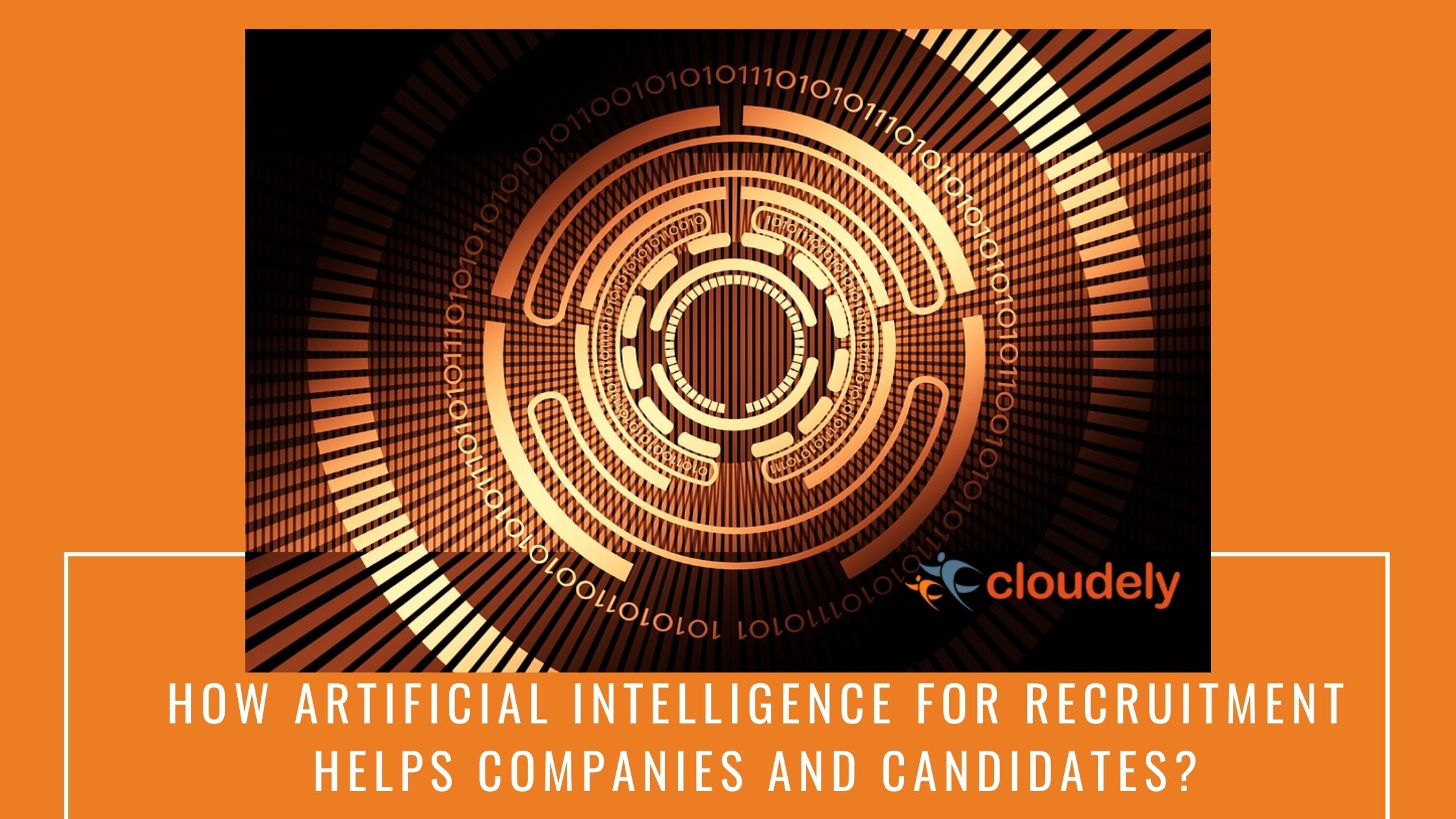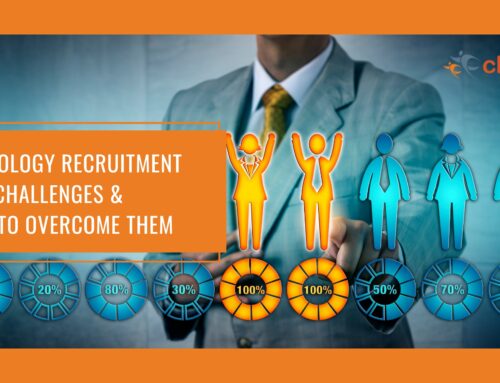Artificial Intelligence (AI) is changing the face of recruitment slowly, but steadily. As per a survey done by Oracle, 37% of recruiters opined that artificial intelligence for recruitment would be the prime helper in talent acquisition by 2021.
With its advanced capabilities to process tons of data and produce quality results, undoubtedly, automation software for recruitment is potent enough to redesign the landscape of recruiting and automate some of its most monotonous aspects.
Handpicking candidates who are in tune with the organizational goals and mindset always challenged the recruiters. In a survey done by LinkedIn, as much as 46% of recruiters agreed that finding the right candidate is one of the biggest challenges that HR teams face today.
From among the multitude of applications that the HR team receives, diving deep and filtering the suitable candidates manually is no small feat. In addition to the countless manual hours that the task demands, there exists a notable probability of missing out on top talent due to various reasons.

Table of Contents
Why do companies need to adopt Artificial intelligence recruitment tools?
The fact that the first step towards making sure that the company is progressing as per its vision starts with recruiting the right candidate, and of course, at the right moment, never made recruitment an easy task.
Furthermore, candidates in recent times are increasingly selective. Attractive packages and a better brand feel are making candidates gravitate easily. With the millennials always on the lookout for better job prospects, the trend of employees quitting their current roles is also on the rise. Undoubtedly, this is adding to the already existing burden on the HR teams.
On the one hand, they have to ensure that the employees are happy in the organization. While on the other, they have to choose the best talent from among the tons of applicants out there to fill the gap so caused. . Thus, dealing with both the hiring and retention of existing employees has turned into a double-edged sword for the HR team.
- As per a survey done by HR Cloud, each unfilled vacancy costs companies $500 per day. Plus, every corporate job posting attracts as many as 250 resumes.
- Besides, not automating the HR operations are costing the companies 35% more while also causing a productivity dip by as much as 41%.
- A survey by Hubspot finds that recruiters spend as many as 13 hours to sieve for a suitable candidate to fill one role.
Here’s where recruitment automation apps pitch in.

How recruitment automation apps benefit recruiters?
Recruitment automation apps are equipped with the power of artificial intelligence. This imparts them the unbeatable ability to sift through the pile of resumes with unparalleled speed and precision.
With a recruitment automation software that is fine-tuned to organizational needs, handpicking the right candidate from a variety of sources including job portals, social media, and recruitment agencies is simpler and smoother than before.
Benefits of Artificial Intelligence in Recruitment
Leveraging the power of AI into recruiting can smoothen the HR operations giving them much needed time to focus on human-related aspects where machines cannot come to help, at least for now.
Besides, a substantial number of manual hours can be saved by automation while also boosting the candidate experience.
As we move along, we shall delve into the benefits of artificial intelligence in recruitment :
Crafting that perfect job Posting
Attracting top talent could mean putting in the best effort from the side of an organization at every stage of recruiting. A job post is the first step that draws the attention of the candidates towards a brand. From the look and feel of the post to how the company’s story is shared with the candidates, every aspect counts for attracting top-notch talent.
Artificial intelligence software for recruitment can help in crafting that ‘perfect job post’ that would surely catch the eye of candidates. With its data and predictive analysis, artificial intelligence-based recruitment apps can help suggest the ‘key words’ that would strike a chord with the prospective candidate.
Thus, the HR team needs not to spend intensive efforts to design a job post and peacefully trust the tool that can help them carve the perfect job advert that is in line with the job needs and organizational goals.
Sieve through the current database
Companies incur a lot of time and effort in screening the resume of the applicants. Such former applicants and candidates who already expressed interest in an organization form a huge database of talent to find new candidates for the current openings. Thus, recruitment automation apps can drastically lessen the efforts, cost, and time for the companies.
Recruitment automation software such as GigMinds can effectively surface suitable candidates from the existing database.
Identify latent talent through passive hiring
Passive candidates form a vital pool of talent that often a company might miss on. A LinkedIn survey revealed an astonishing fact that 87% of passive candidates are ready to switch on to a better job if they find one.
However, manually identifying talented candidates who are already employed elsewhere, and can match suit an organizational need is not an easy task.
Artificial intelligence software for recruitment comes equipped with features to search for passive candidates and proactively build a trustable relationship that can help to accomplish this task easily.
Fair, inclusive and transparent recruiting
Recruitment should be a bias-free and neutral process to accomplish the best interests of an organization. Most companies today are laying focus on inclusion and diversity in their organization. Unfortunately, this may not be easily achievable through regular job posting strategies and employee referrals.
Taking the help of AI also assures transparency, fair decisions, and meeting other goals such as diversity and compliances.
This also eliminates favoritism that might often push the truly talented candidates towards the backstage.
By basing their decision on data and predictive analytics, recruitment automation apps can help filter candidates purely based on their skills and experience. They can suggest job descriptions and keywords that are in alignment with the inclusivity goals of companies. This lets the job advert draw more attention and reach a wider audience than expected.
Related: Tips to Hire Remote Employees
Better candidate engagement
The relation with a company starts from the moment a candidate applies for a role. While recruiters might respond to queries from candidates, the task can be demanding, especially when the number of candidates the HR team has to handle is high. Any slightest delay or miscommunication can shatter the brand image from the candidate’s viewpoint.
To handle such repetitive tasks and enhance the candidate experience, Artificial intelligence software for recruitment is a perfect choice.
From guiding them to the next step and answering their queries, recruitment automation apps can handle the candidate engagement in the most human way.
Effective video interviewing
Video interviews, which were once optional, are now indispensable. Thanks to the remote work style, video interviews are here to stay.
However, this means HR teams need double care while assessing candidates virtually as it demands many points to consider and assess that are otherwise simpler during a face-to-face interview.
Video interviews can have many aspects that demand pinpointed attention. Candidates might refer to help for answering technical questions or have a friend who is giving a proxy for them over the call.
Artificial intelligence software for recruitment can identify all such aspects with their best accuracy.
By observing for any slightest deviations from the normal behaviors of a candidate for assessing the voice patterns and body language, recruitment automation tools can be the best choice to confirm if the candidate is honest and reliable.
Smoother onboarding
Candidates anticipate a warm onboarding during their joining of any company. No wonder, they would feel at home when the onboarding is done in a friendly and streamlined approach.
Newly joined candidates have many doubts ranging from the number of leaves they are eligible to, the location of the gym, and the coffee machine.
By handing over a comfy, engaging, and interactive onboarding tool to the new joiners, all the answers for such newbie employees’ questions can be easily delivered.
Employees need not waste their time in running to the HR team or sending emails to get their doubts clarified. An interactive and intelligent system can take care of all these, thus saving time and effort for both parties.
Related: Hiring Secrets for Recruiters
Benefits of Artificial Intelligence in Recruitment – Impact on KPIs
Recruitment automation apps offer a lot more than improving the hiring experience for both the employer and employee. Particularly, they play a positive role in enhancing the KPIs of HR teams.
Cost per hire:
- As per Deloitte’s Talent Acquisition Factbook, on average, U.S companies spend $4000 to fill an open position. Plus, it takes 52 days to fill an existing vacancy.
- Recruitment automation software can target the right candidates with precision, directly cutting down on both the time and cost per hire.
- Right from crafting a job post, screening the candidates, engaging, and welcoming them on-board – the whole process occurs in a streamlined manner and with minimal human intervention.
Time to hire:
- The cutting-edge recruitment and automation software such as GigMinds uses the best capabilities of Artificial intelligence that overcomes the drawback that earlier recruitment automation tools had.
- With their advanced NLP techniques, the latest automation software tools can process comprehensive job taxonomies much efficiently, cutting down the overall time to hire.
- Recruitment automation apps such as GigMinds can offer many metrics that can help to analyze the pressure points. Their insights can help tweak the hiring strategies of an organization in the long run.

Is Artificial Intelligence in Recruitment a threat to HR teams?
According to Andrew Ng, a Chinese-American AI research specialist, every industry is bound to witness the impact of AI in the next decade. That said, Human Resources is not immune to this. Fortunately, HR teams do a lot more ‘human’ work that machines cannot soon replace in any way.
With the right mix of humans and recruitment automation apps, businesses can benefit immensely. While the data analysis and filtering may be taken care of by recruitment automation apps, human HRs can focus on the decision-making aspects.
Interestingly, as high as 70% of recruiters in a LinkedIn survey agreed that recruitment automation tools benefitted them in enhancing their productivity.
With the change in the work styles and living spaces across the globe turning into personal offices, HR and recruiting are bound to witness many unforeseen challenges where AI can undoubtedly lend its helping hand.
Summing it up
The aspects that we discussed so far are just the beginning of the potential of AI for recruiting. Companies can benefit greatly from artificial intelligence software in recruitment that can pave the way for inclusion, surface the hidden talent from a passive pool, all at reduced costs and faster pace.
With their advanced analytics and data processing techniques, recruitment automation apps can help companies find the right talent at a lesser budget and time. Besides boosting the employee-employer engagement throughout the hiring process, they also increase the success rate for candidates in getting noticed by their dream companies. Undoubtedly, Artificial intelligence for recruitment can be a welcoming move for both parties.
About Cloudely
At Cloudely, we are dedicated to enhancing the hiring experience of the new generation companies and recruiters. Cloudely powered by GigMinds, equipped with artificial intelligence, helps the recruiters and candidates alike to find their perfect match. To know more about us, visit our website or say hello on Facebook, LinkedIn, or Twitter.






